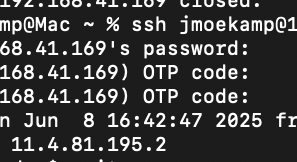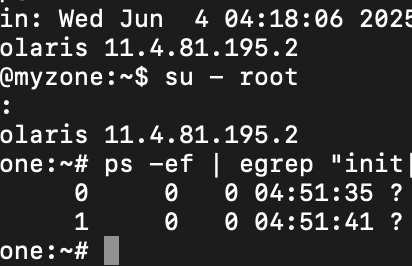I remember i have first talked at a Solaris day in the Vienna Urania about sxadm for security extension administration. At that time we had one security extension and having an own administration program looked a little bit over the top for it. The single existing extension was for ASLR or “address space layout randomization”.
root@solaris:/# sxadm info
EXTENSION STATUS CONFIGURATION
aslr enabled (tagged-files) system default (default)And this was it … in 2013. Well, things have grown significantly since and so sxadm makes a lot more sense. Now it’s a central place for checking the state and partly to control the state of a number of security mechanisms and mitigations inside of Solaris. This is the current output of the system on a x86 system.
aslr enabled (tagged-files) u-c--
ibpb not supported -----
ibrs not supported -----
if_pschange_mc_no not supported -----
kpti enabled -kcr-
l1df enabled -kcr-
md_clear enabled -kcr-
mds_no not supported -----
nxheap enabled (tagged-files) u-c--
nxstack enabled (all) u-c--
rdcl_no not supported -----
rsbs enabled -kcr-
smap not supported -----
ssbd not supported -----
taa_no not supported -----
tsx_disable not supported -----
umip not supported -----The list looks differenly on a SPARC system because for example ADI isn’t available on x86. The job of sxadm got a little bit different. For some extensions it’s more like a status report, not a mechanism to enable or disable them, as they are either always enabled, enabled or disabled elsewhere or just show the state of things. I will cite the public man page for the following list.
A first group of extensions manages Solaris feature (albeit they may use CPU features). Some of the features are quite old like nxheap and nxstack, which were managed by /etc/system in the past.
ADIHEAP: ADI based protections for heap allocatorsADISTACK: ADI based protections for stacksKADI: ADI based protections for kernel heapASLR: Address Space Layout RandomizationNXHEAP: Non-Executable HeapNXSTACKNon-Executable Stack
A number of other extensions are meant to manage the mitigation against vulnerabilities of CPUs. Please consult the sxadm man page for further information.
HW_BTI: Hardware BTI MitigationIBPB: Indirect Branch Prediction BarrierIBRS: Indirect Branch Restricted SpeculationKPTI: Kernel Page Table IsolationL1DF: Level 1 Data Cache FlushMD_CLEAR: Microarchitectural Data Sampling Avoidance MitigationRSBS: Return Stack Buffer Speculation MitigationSMAP: Supervisor Mode Access PreventionSSBD: Speculative Store Bypass DisableTSX_DISABLE:Intel TSX Asynchronous Abort (TAA) Avoidance Mitigation by disabling TSXUMIP: User-Mode Instruction PreventionIF_PSCHANGE_MC_NO: Machine Check Error on Page Size Change Mitigation
There are a number of extensions that are meant to show you that some mitigations are not active because your CPU isn’t vulnerable.
MDS_NOMicroarchitectural Data Sampling Hardware Avoidance Mitigation. This one is enabled when you don’t need the mitigation mechanism provider byMD_CLEARbecause you CPU isn’t vulnerable.RDCL_NORogue Data Cache Avoidance Mitigation. This is as well only enabled when your CPU isn’t vulnerable.TAA_NO>: Intel TSX Asynchronous Abort (TAA) Hardware Avoidance Mitigation. This is only enabled, when your CPU isn’t vulnerable and it supports TSX.


